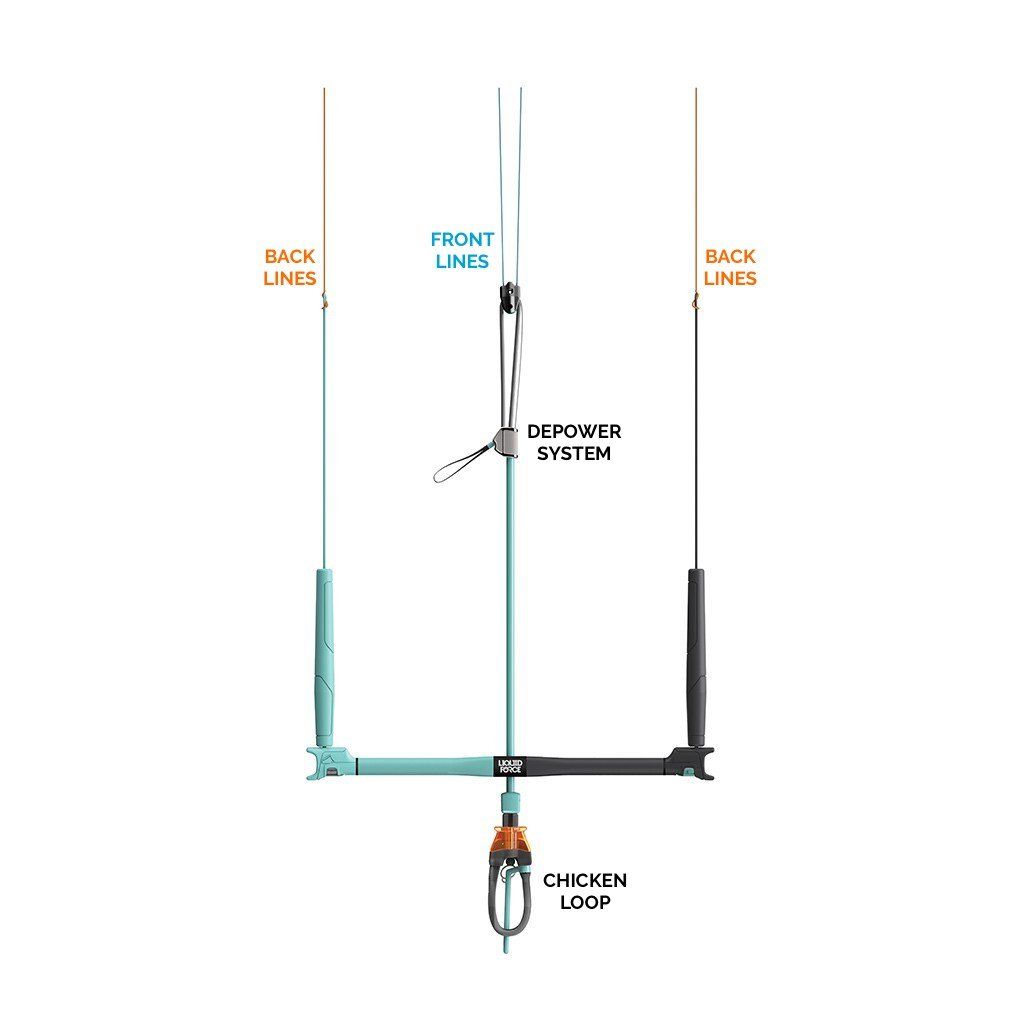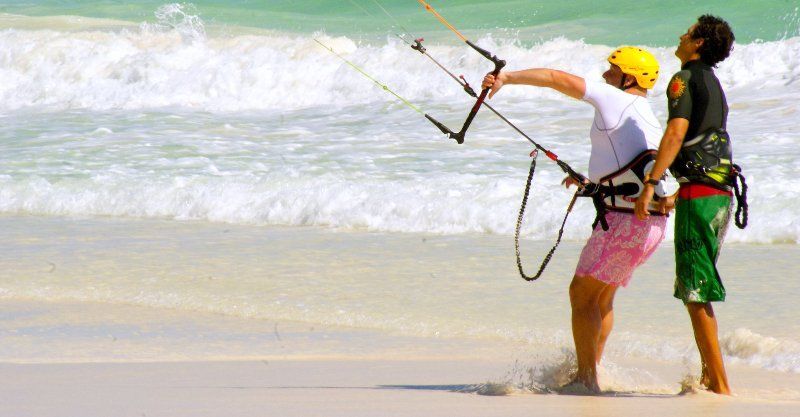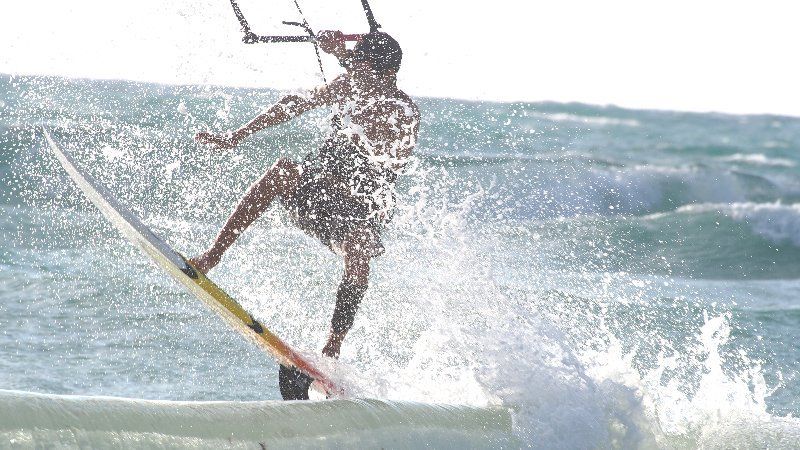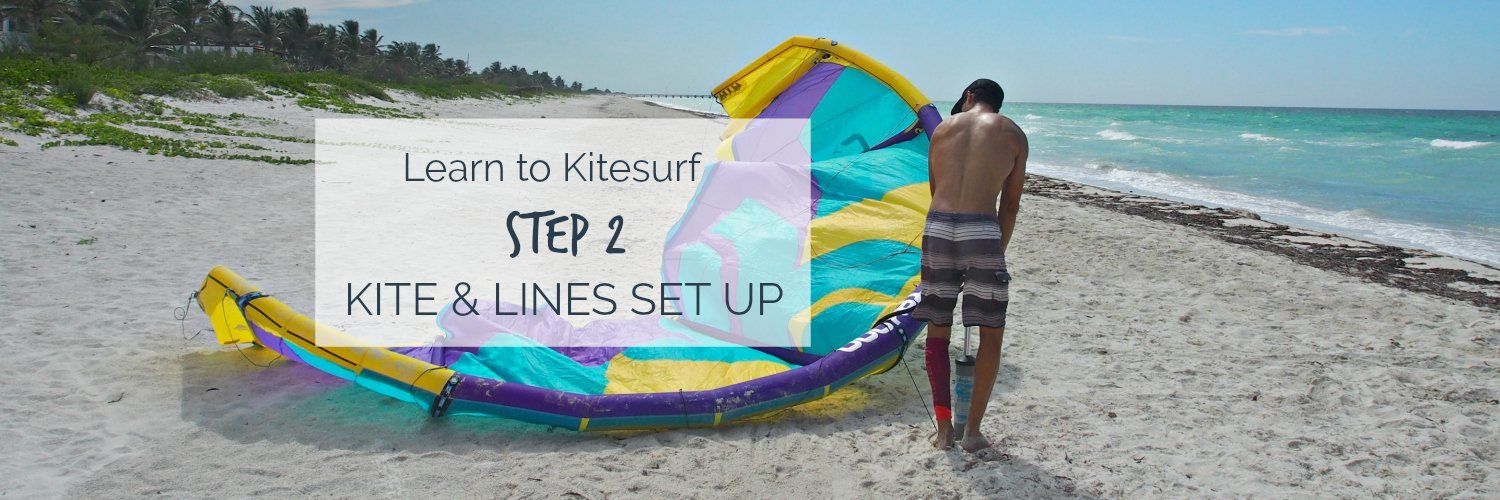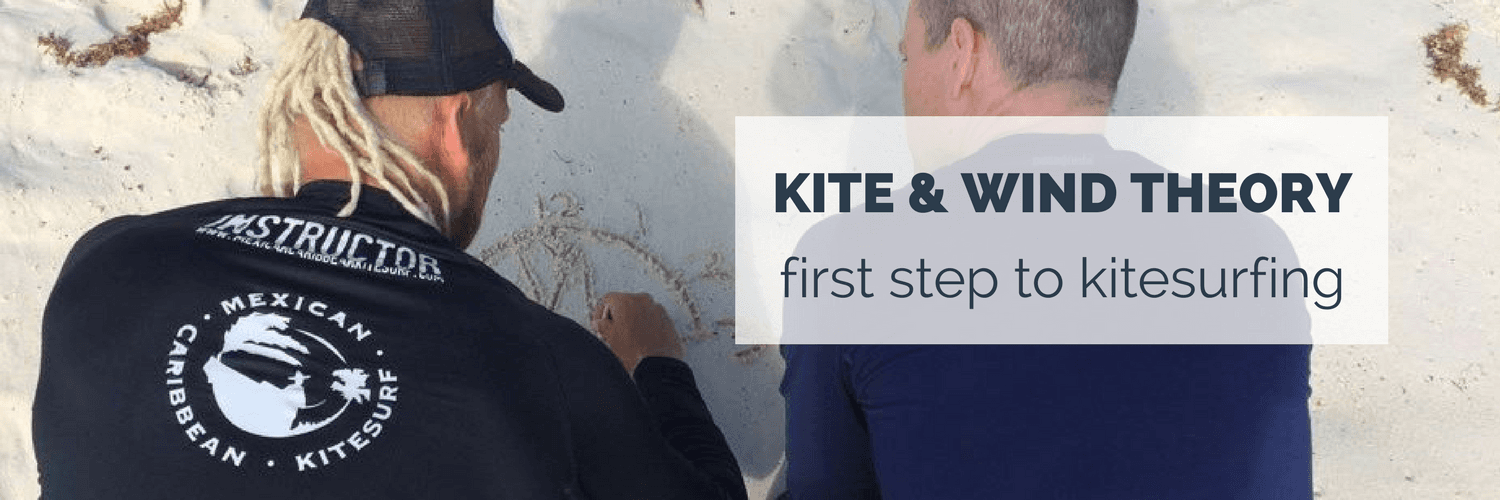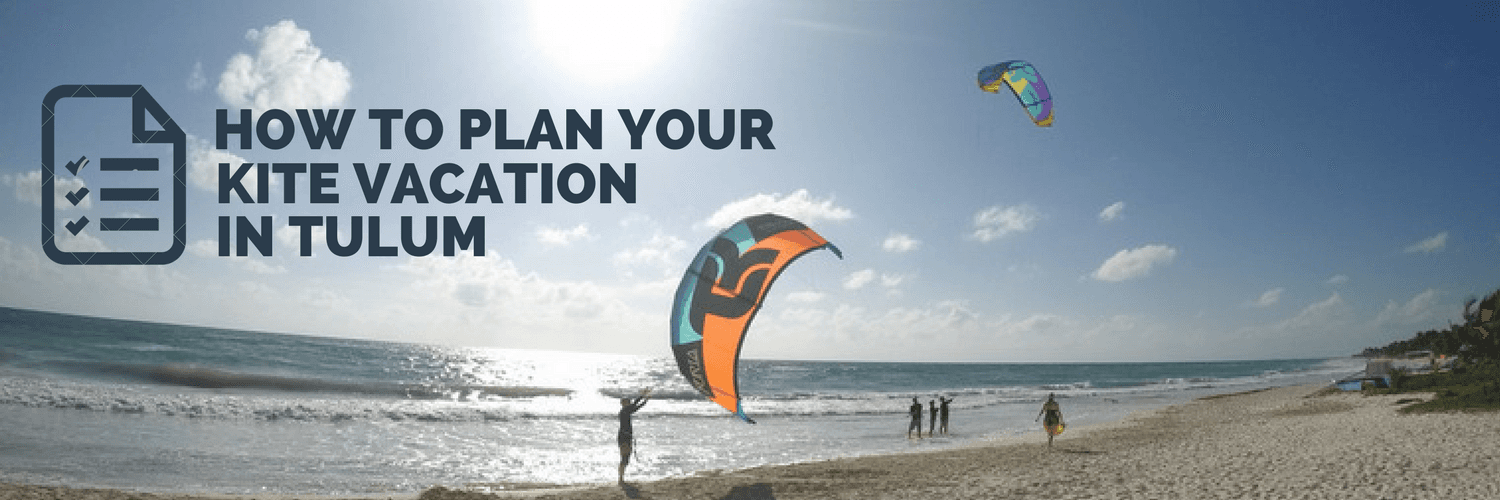Step 3 in your kite course: know the bar basics and your safety systems
After learning
how to set up your kite equipment
, let’s continue checking how the bar works and, one of the most important parts of the course, which safety systems do yo have.
Please take this just as a brief explanation of what you will learn with your certified instructor on your first day of lessons. Do not miss the first lesson and never try to learn kitesurf on your own.
How the control bar works?
The control bar is an important part of the kite gear. Through the movement of the bar we adjust the angle of the kite giving more or less power to it. (Please remember that to fly the kite we'll grab the bar with the left hand on the colored part.)
The back lines
(the ones attached to the end of the leading edge) are connected directly to both sides of the bar.
--- If you bring the bar close to you (pulling the bar in), you make the back lines shorter, changing the angle of the kite and giving power to the kite (+ POWER)
--- If you move the bar away from you (pushing the bar out) you make te back lines longer, changing the angle of the kite again and diminishing the power of the kite (- POWER)
The front lines
are connected directly to the depower system of the bar (in the center of the bar). Using the depower system you can adjust the length of the front lines, changing also the angle of the kite and its power.
--- If you release the depower making the front lines longer you will have more power in your kite.
--- On the other hand, by pulling in the lines (depowering) you will short your lines and your kite will lose power.
As you can see both back & front lines can change the angle of the kite giving power or depowering the kite. ¿What is the difference, then? ¿When you have to use the back lines and when the front lines?
Well, the front lines connected to the depower system will be use only as an adjust when needed. For example, if you are about to start kiting and the wind is too strong you can adjust the power of your kite (depowering it) making your front lines shorter. Another example, if you are kiting and suddenly the wind drops and you need more power to continue kiting, you can release your front lines giving more power to the kite.
On the other hand, the back lines (the ones connected directly to each side of the bar) are used all the time to ride. We ride by constantly adjusting the angle of the kite through the bar movement.
Once we know the inner workings of the bar, lets see one of the most important things you need to know about kitesurfing. So, if you haven’t been paying so much attention, now it’s time to do it. Please be super focus when learning your safety systems.
Safety systems for kitesurfing
There are always 3 steps you need to follow when you are in any kind of trouble when kitesurfing. The order must be respected all the time. There is no reason to use step number 2 if we can solve the problem with number 1.
The safety systems have to be activated in the following order:
1) Release the bar
2) Activate the quick release
3) Activate the safety leash
1) Release the bar
The first safety system and the easiest way to solve any problem when kiting is letting go of the bar.
- ¿What happen when we release the bar?
Our kite will automatically loose power and fall to the water. Once the bar is released and we take control of the situation we can relaunch the kite and continue kiting. Sometimes we release the bar and can take control again before the kite even touches the water.
- ¿When should the bar
be released ?
Letting go of the bar can be used when you crash your kite, when the wind is too powerful or when you feel a dangerous situation coming up. Specially, when you crash your kite agains the water is important to let go of the bar to avoid being dragged by the kite.
In about 90% of situations, simply letting go of the bar will be enough.
2) Activate the quick release
After releasing the bar, if you still don't have 100% control of the situation, you can go for the second safety system releasing the chicken loop. This way the bar will go away from you.
- ¿What happen when we activate the quick release?
The kite will just have tension in one line. This way the kite will automatically fall, take a flag position and will lose all its power.
In such situation you will still be attached to the kite through the safety leash connected to the bar.
- ¿When should we use the quick release?
If you’ve let go of the bar but the kite keeps pulling you or you still feel unsafe, it might be time to activate the quick release. Common situations to use this second safety system would be: a sudden increase in wind being overpowered or when your kite is looping out of control.
In the 99% of the situations we will solve the problem using option 1 and 2. However, today’s kites are very safe and offer a third safety system.
3) Activate the safety leash
Releasing the safety leash is the 3rd safety system but also a very last option to use.
- ¿What happen when releasing the safety leash?
You are not connected to the kite anymore. So, you can say goodbye to your kite.
- ¿Why is it a last option?
This safety system should be a last option not juts because you can actually lose the kite, but because if you are kiting in onshore or side-on conditions (which are the normal conditions used to kite almost everywhere), your kite can fly to the shore and become a hazard to other people on the beach. People could get hit by the kite, get tangled in the lines and be dragged by them. If you are lucky and there is no one on the beach the kite will find any other obstacle (a palm tree, a boat, a car, a bulding) and will break.
- ¿When to use this system, then?
In very rare situations, when none of the above systems work, your last safety option is to activate the safety leash which is attached to your harness. For example, if you are kiting and a motor boat pass and your lines get tangled on it, you should release the leash and let the kite go.
If your lines get tangled with another kite on the water, just try to solve the situation by using options 1 and 2.
Safety system can work slightly different depending on the kite label. So, if you are renting a kite or using a friends kite, please know how the safety systems work before going to the water. This is a MUST.
*** SUMMARY ***
STEP:
3 - Inner workings of the bar & safety systems
DURATION APPROX:
15 minutes
WHY IS IMPORTANT:
Because knowing the safety systems for kitesurfing will solve any situation or problem you may have kiting, avoiding being dragged away by your kite & avoiding causing any accident.
NEXT STEP:
4 - Self rescue technique
